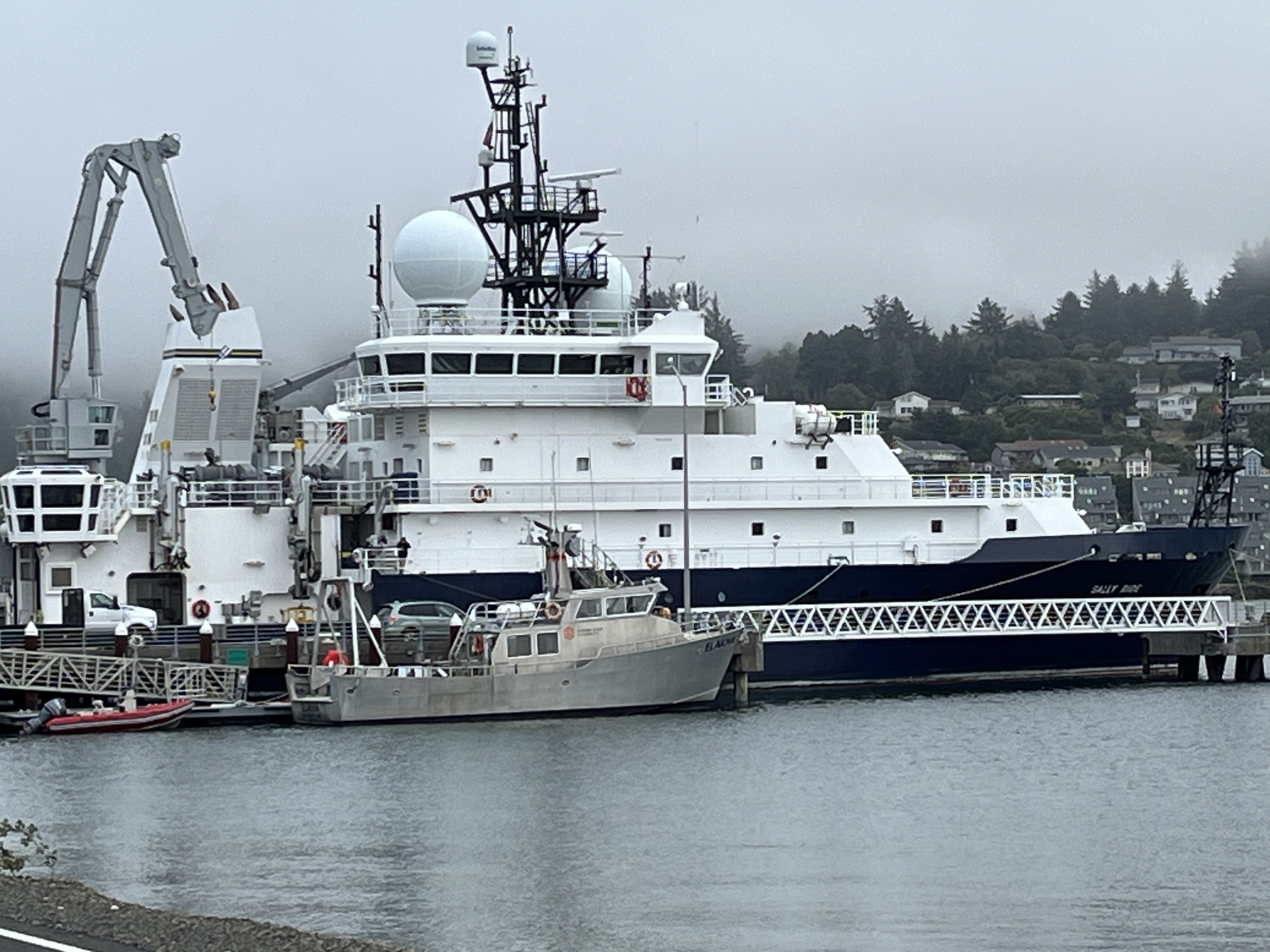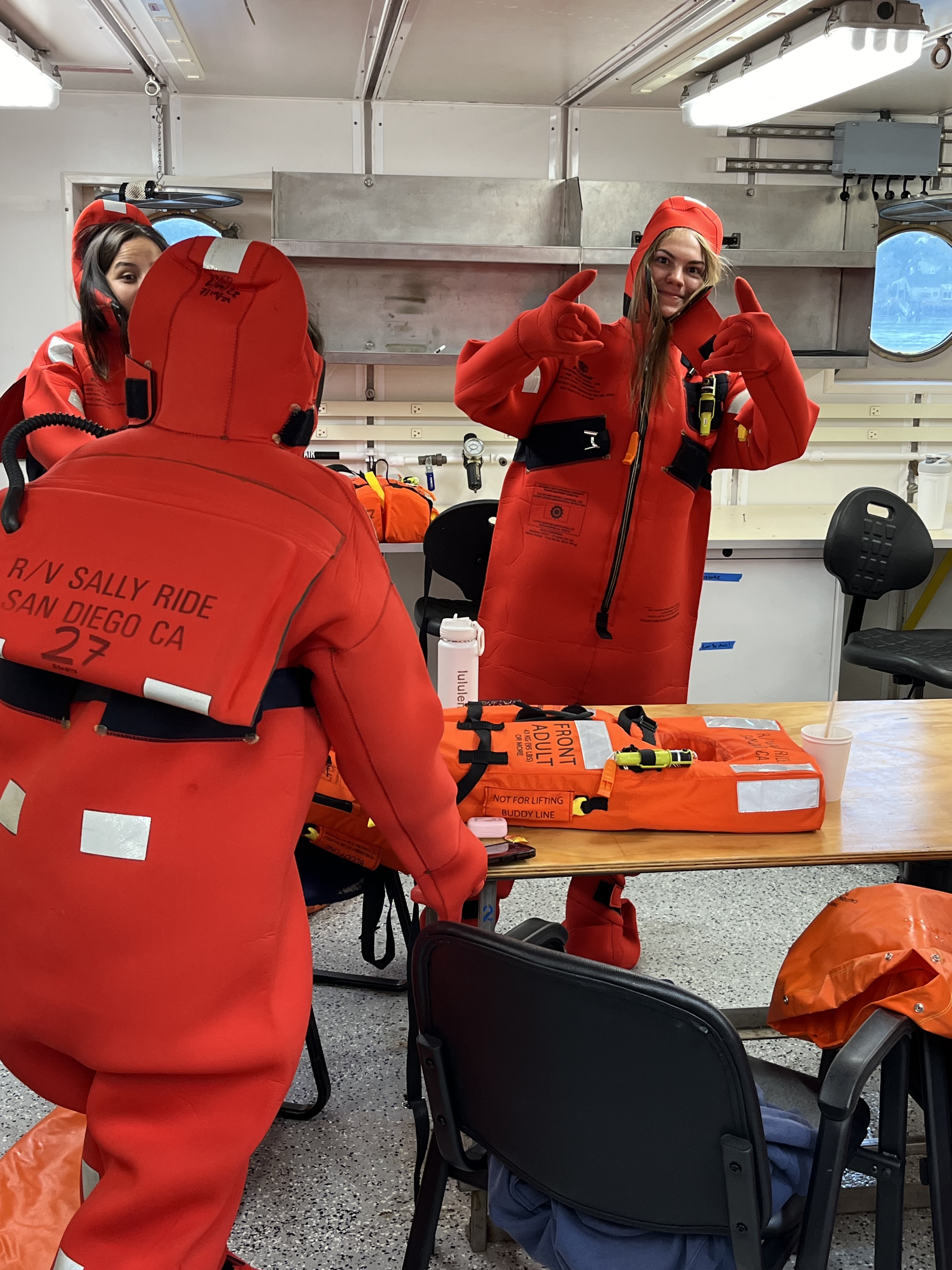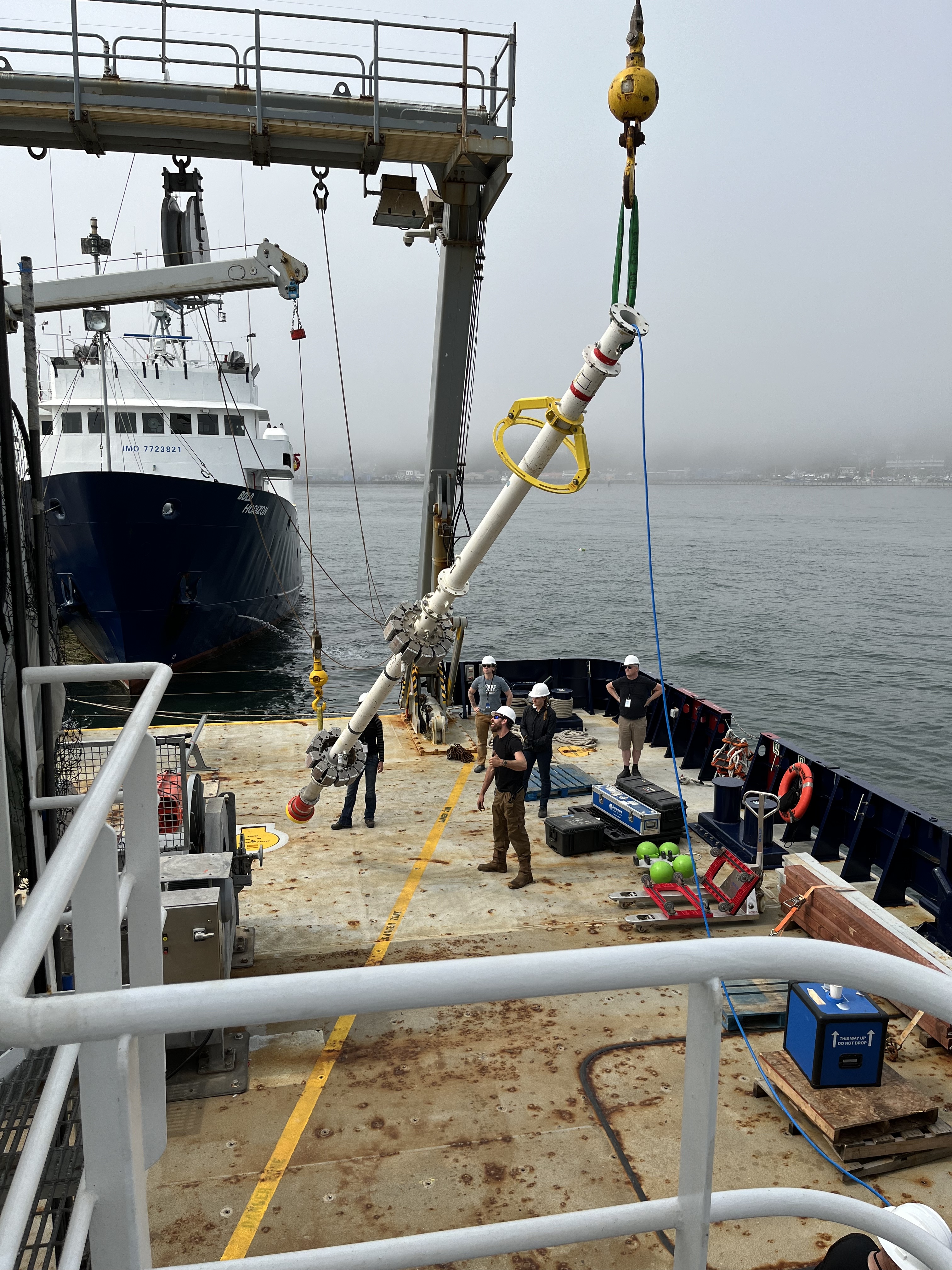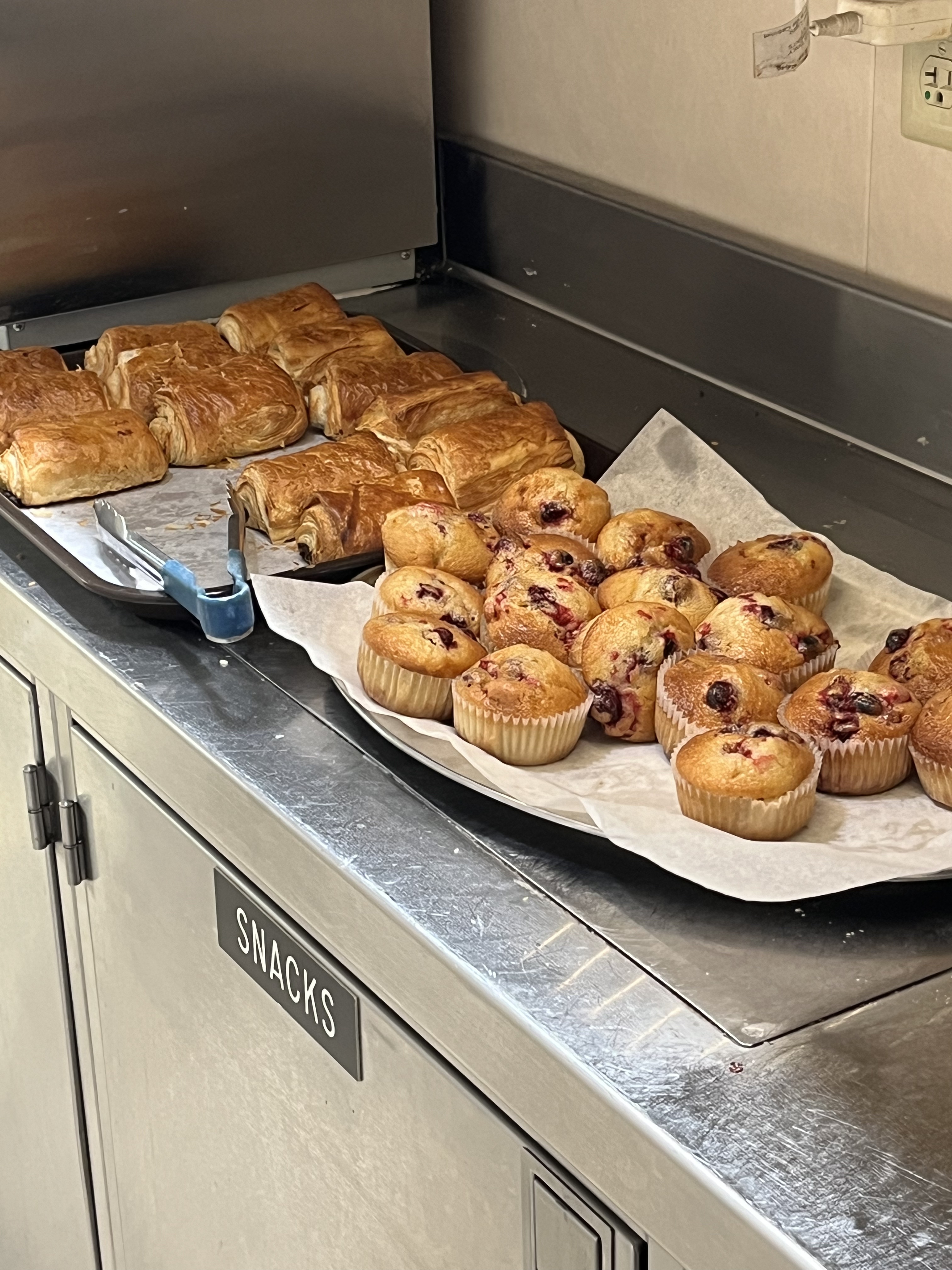
CHINOoK: Cascadia Hydrothermal circulation IN Oceanic (K)rust
Home About Team Blog (2022 cruise) Blog (2024 cruise)
This is a blog post from the fall 2024 CHINOoK cruise, written by members of the science party onboard the R/V Sally Ride from September 6 - 16, 2024.
September 6, 2024
Returning for more heat flow in Cascadia on the R/V Sally Ride
posted by G. Spinelli
It has been 2 years since the field efforts of this project began on the R/V Langseth. Now, we are happy to have an opportunity to collect additional heat flow data as part of our efforts to better understand the processes that control the thermal state of the Juan de Fuca plate prior to its subducting beneath North America. Our science party has assembled from Oregon, Colorado, California, New Mexico, and Mexico -- and we are now aboard the R/V Sally Ride, ready to sail from Newport out into the Pacific. For the science party, today was occupied with loading scientific equipment (and ourselves) onto the ship and preparing the heat flow probe for deployment.
Below: R/V Sally Ride at the dock in Newport, Oregon

September 7, 2024
Safety first
posted by G. Spinelli
At our first safety meeting, the science party was asked to practice putting on our cold water immersion suits. In the photo below, Madeline Fresonke (NMT Ph.D. student) is happy to have sucessfully donned her "Gumby suit".

September 8, 2024
Communications for the heat flow probe
posted by G. Spinelli
One of the main tools that we are using for data collection on this cruise is a heat flow probe, which we lower on a wire to insert into the seafloor sediment. While the heat flow probe is on the seafloor (about 2.5 km (or 1.5 miles) below the sea surface, here), we want to be able to communicate with it. This allows us to receive and review data in real time, so we can determine if the probe is working properly. We use soundwaves sent through the water between the ship and the heat flow probe for this communication. In the photo below, we are installing a pole with a transmitter through a hole in the hull of the ship so we can lower the transmitter down into the water below the ship (it gets pulled up when we are moving the ship fast or for long distances). The transmitter is the orange bit at the bottom of the pole.

September 10, 2024
An army marches on its stomach
posted by G. Spinelli
The adage that "an army marches on its stomach" may also apply to the opperation of the crew and science party on a research vessel. The food on the R/V Sally Ride has been very good. Today, the cooks surprised everyone with some lovely chocolate croissants straight from their oven in the galley. I didn't try the cranberry muffins next to the croissants. I'm sure that they were good, but the croissants were quite a pleasant surprise.

September 12, 2024
We are working, not only eating
posted by G. Spinelli
The primary tool that we are using on this research cruise is a heat flow probe, which has 17 very sensitive thermometers that we insert into the seafloor sediment. This allows us to determine how the temperature increases with depth, and therefore how rapidly heat is being transported out of the earth into the ocean at a particular location. In the photo below, Madeline Fresonke is in front of the heat flow probe while it is being readied for deployment. All the computing, data logger, battery, etc. are in the orange housing. The pencil-thin tube coming out the left side of the orange housing at knee height of the guy with cowboy boots is the string of 17 thermistors that we jam into the seafloor sediment.
